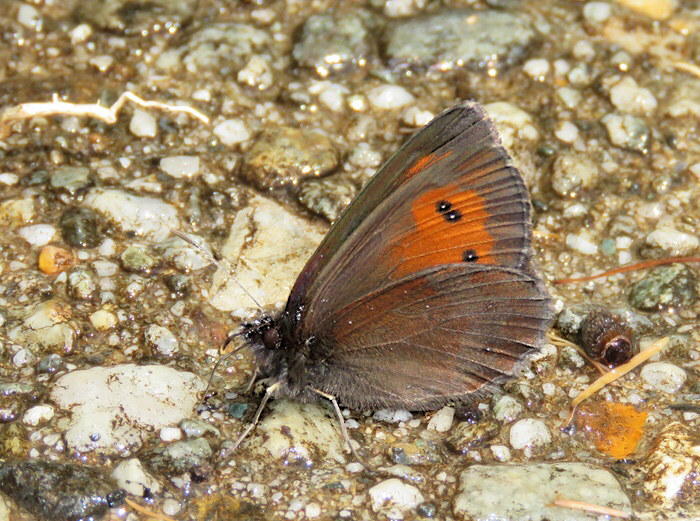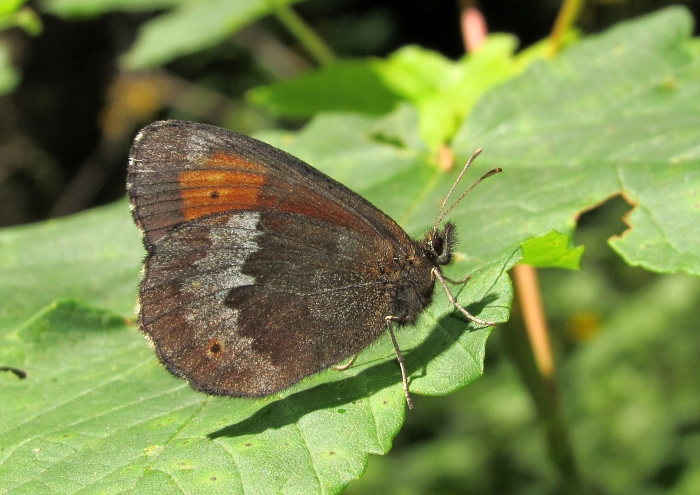
Male, Switzerland, July 2014

Male, form
adyte,
Switzerland, July 2014

Female, form
adyte,
Switzerland, July 2014

Male, Switzerland, August 2013

Male, form
adyte,
Switzerland, July 2019

Male, form
adyte,
Switzerland, July 2018

Switzerland, August 2008 (form adyte)

Switzerland, August 2008 (form adyte)

Female, Val d'Aran, July 2008

Male, Val d'Aran, July 2008

Male, Val d'Aran, July 2008

Male, Switzerland, August 2007

Distribution
The large ringlet is
widespread and
locally common in the mountains of Europe, though absent from
Scandinavia. I find it almost exclusively in areas with trees - often
but not always coniferous - though it is said to fly in grassy areas
above the treeline too. On many occasions I have been walking mountain
tracks passing between open country and trees and bushes, and
encountered this species each time I entered the more woody areas. This
has been true in the Pyrenees and the Swiss Alps - the two areas where
I have seen it.
The upperside is very variable. In parts of Switzerland, form adyte
flies, which can look very like an Arran brown. Equally, in parts of
Switzerland, blind forms of Arran brown fly, looking very like large
ringlets! Like the Arran brown (and the Scotch argus), this species has
chequered fringes, but it is smaller and usually looks less bold, with
less extensive orange. Fortunately, the underside is distinctive. The
male is very dark, with a single, white 'tooth' in the middle of the
hindwing, on the edge of the slightly paler band beyond the cell.
Occasionally this tooth is absent. The female has a much brighter
hindwing, with a strong pale band, but also shows this white tooth -
generally with more white above and below. The Arran brown has a white
'paint splash' coming down from the costa of the hindwing, not reaching
further down than the middle of the wing. The Arran brown also has
three or more conspicuous, orange-ringed ocelli on the underside
hindwing, where the large ringlet has much smaller and less conspicuous
spots.
Large ringlets fly in a
single brood in
July and August. The caterpillars feed on various alpine grasses and
sedges and hibernate twice - the first time often while still in the
egg. The life-cycle therefore takes two years.
























